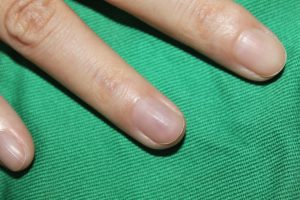4 strategies to break dopamine addiction and regain control

From the daily coffee, the endless scrolling of the phone, to the uncontrollable impulse of online shopping, these seemingly insignificant habits have sometimes quietly developed into “addictive behaviors”. Addiction is not just an over-reliance on a certain behavior or substance, it is actually closely related to the biochemical reactions and neural mechanisms in the brain.
There is a “reward system” mechanism inside our brain. When we complete a pleasant thing, such as eating sweets, exercising, getting praise, or scrolling through the phone to watch short videos, the brain will release “dopamine” neurotransmitters, which will make us feel satisfied and happy.
This positive feedback will naturally make people want to repeat the same behavior. However, if the stimulation is too frequent or too strong, the reward system will gradually “adapt” and then produce the so-called “tolerance”, which will make people need more and stronger stimulation to feel the same happiness again, and then enter the cycle of addiction.
4 daily habits may be signs of addiction
Many people think of “addiction” as tobacco, alcohol, drugs, etc., which are “substance addiction”. As technology and lifestyles change, more people are facing the troubles of 4 types of “behavioral addiction”. Regardless of the type, repetitiveness, loss of control and impact on life are important signs of addiction.
- Internet or mobile phone addiction: unable to leave the phone for a long time, scrolling through online social networks to the point of insomnia.
- Shopping addiction: often impulsive consumption, but feel regretful and empty afterwards.
- Game addiction: unable to restrain playing games for a long time, so as to neglect work and interpersonal relationships.
- Food addiction: repeated overeating, but unable to stop.
Addiction does not develop overnight, but subtly enters daily life.
5 common characteristics of addictive behavior:
- Strong desire: repeated urge to do something, difficult to resist.
- Decreased self-control: although tried to control and reduce the number of times, but repeatedly failed.
- Impact on life functions: Addictive behavior causes damage to studies, work, family, and interpersonal relationships.
- Withdrawal discomfort: When stopping the behavior, physical and mental discomfort such as anxiety, depression, insomnia, and hand tremors occur.
- Self-justification: Make excuses for the behavior and deny the seriousness of the problem.
Stop stimulating the brain to reshape
Although addiction is related to the neural structure of the brain, it is not unchangeable. The brain has “plasticity”. After stopping the addictive stimulation, the brain can slowly restore balance through correct treatment and life adjustments. The key is to detect the problem and seek help. Everyone has the possibility of getting out. Four strategies to fight addiction:
- Increase self-awareness: Record when you are most likely to fall into addictive behavior, and think about the emotions or stress sources behind it.
- Establish alternative behaviors: Replace addictive behaviors with healthy behaviors such as exercise, reading, and social activities.
- Set small goals: Don’t ask for immediate abstinence, but you can gradually reduce the frequency and degree of dependence.
- Seek professional help: You can consult a psychosomatic physician or psychologist.
Addiction is not a failure of willpower, but a natural phenomenon in which the brain overreacts to pleasure signals.
When we understand the operation behind it, we can blame ourselves less and look at ourselves more rationally and gently. You can try to observe your own state and adjust the pace of life, and then you can slowly find your own rhythm.








